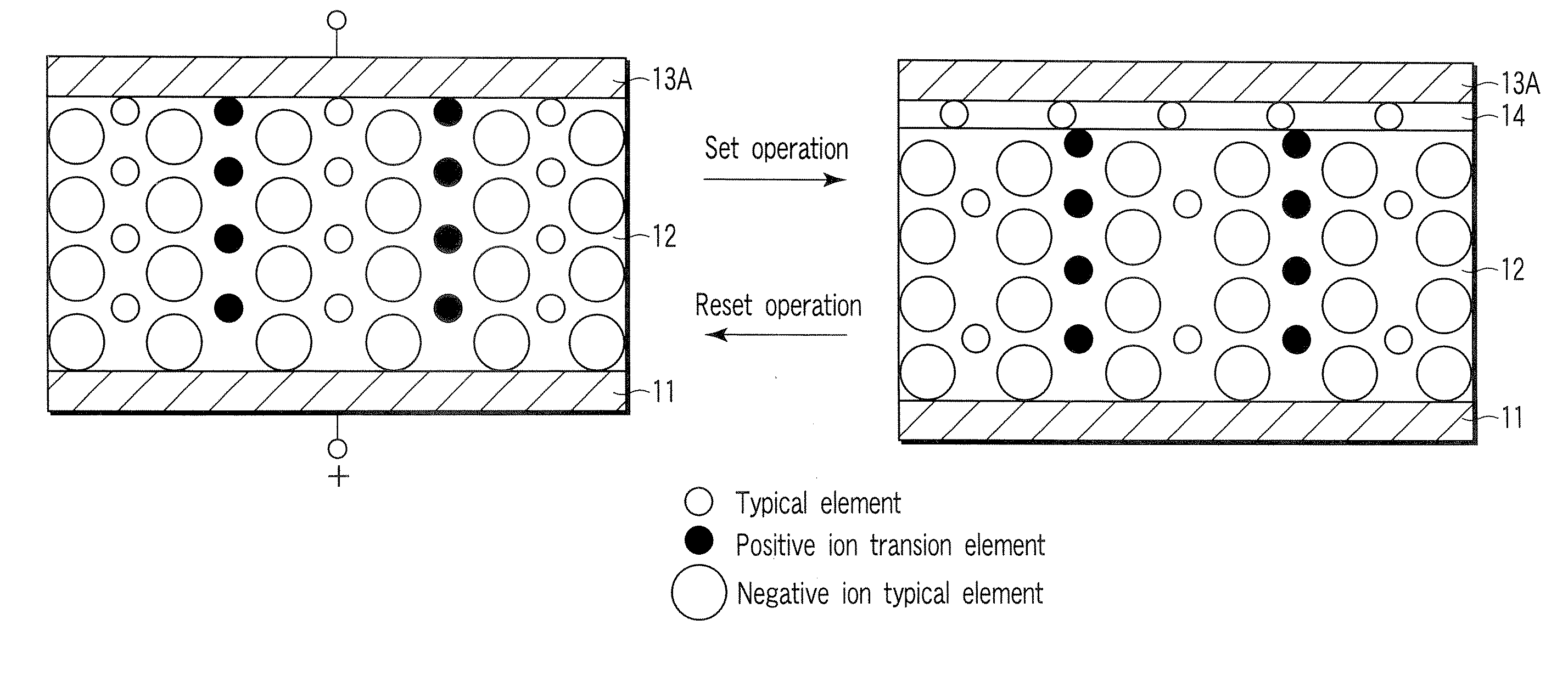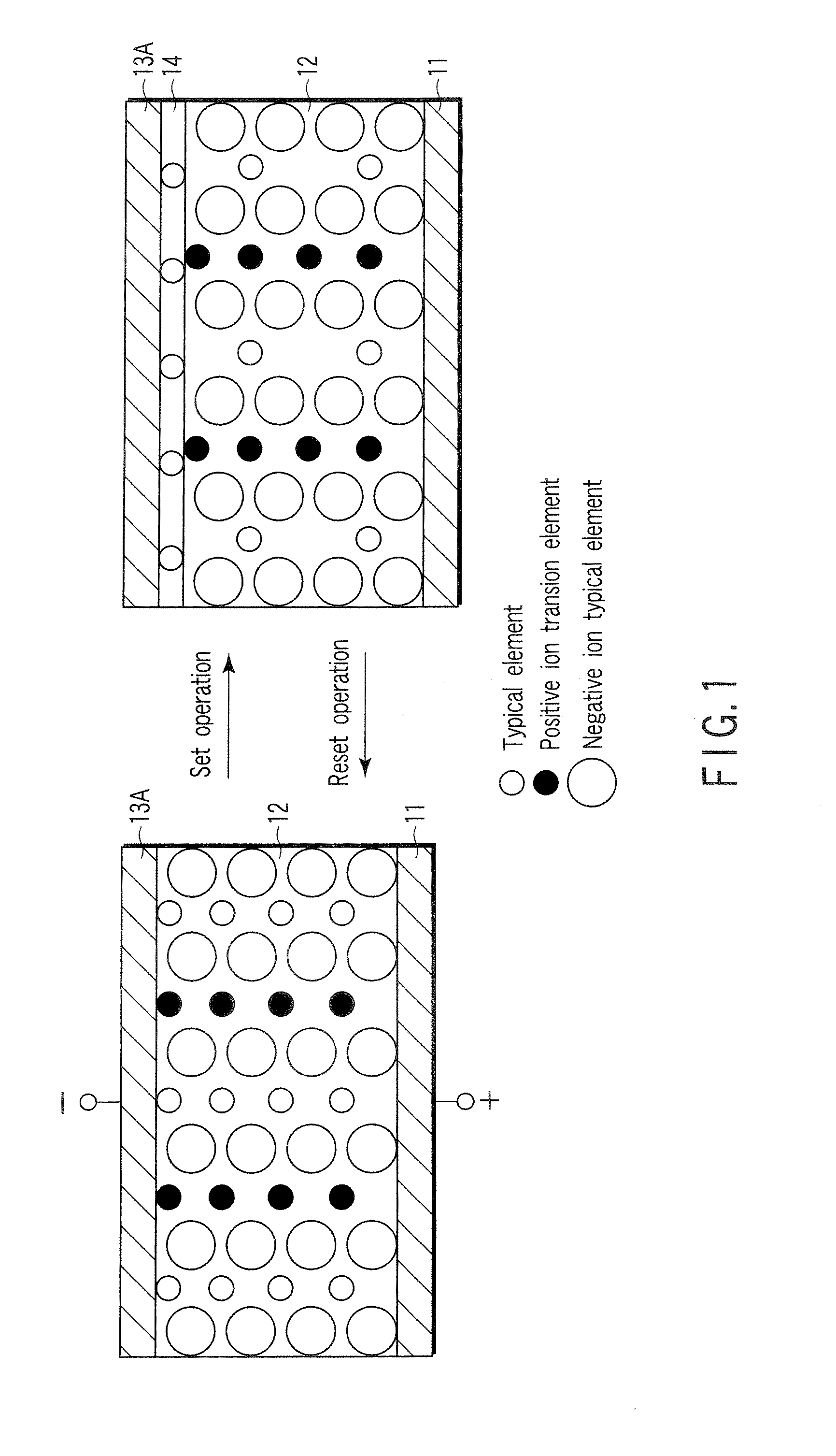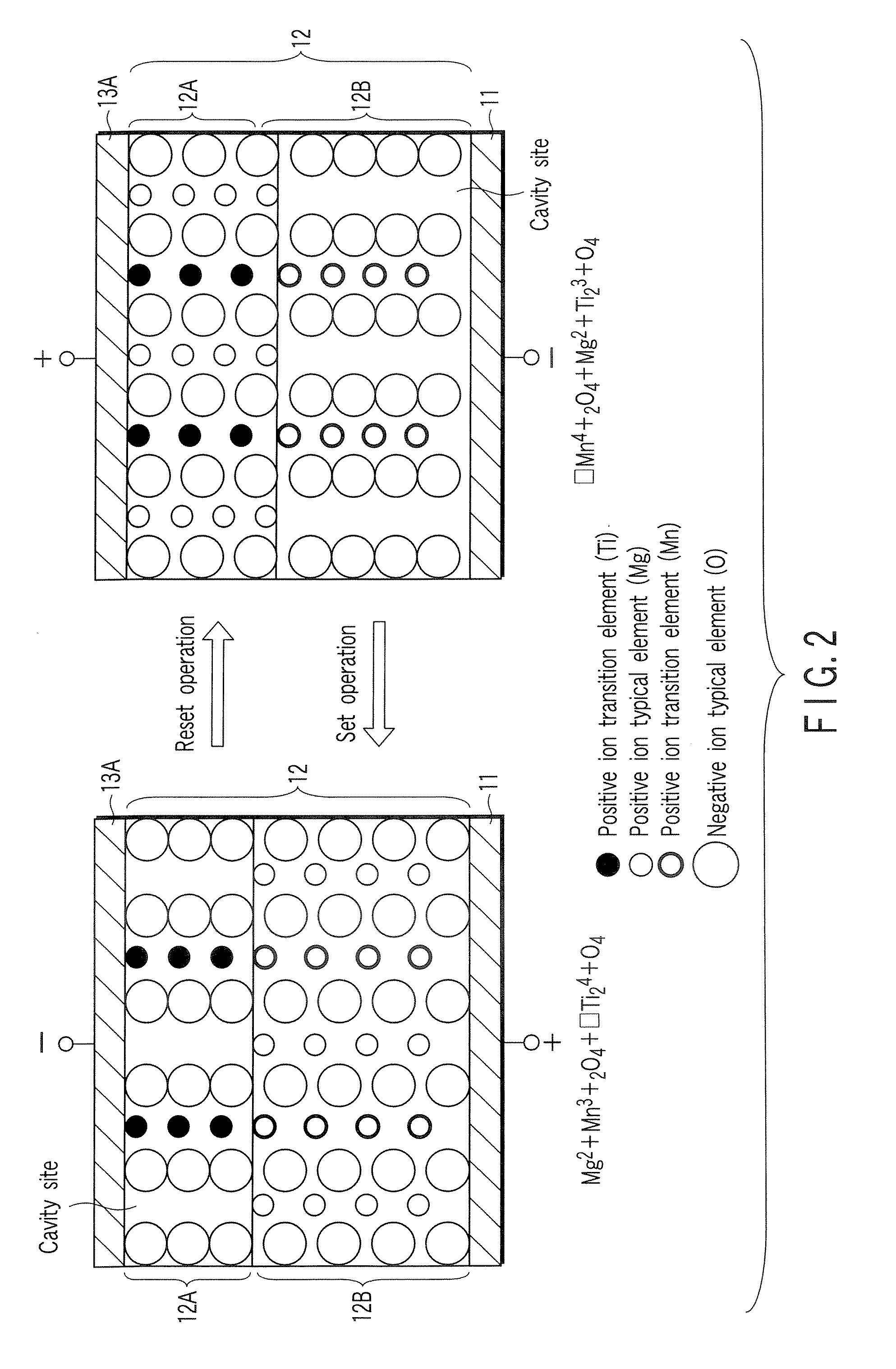Data read/ write device
a data read/write and data technology, applied in nanoinformatics, instruments, record information storage, etc., can solve the problems of reducing the minimum line width, increasing processing costs, and limiting the recording density
- Summary
- Abstract
- Description
- Claims
- Application Information
AI Technical Summary
Benefits of technology
Problems solved by technology
Method used
Image
Examples
first example
[0256] A first example shows a case of using the material shown in FIG. 1 for the recording layer.
[0257] A recording operation (set operation) may be achieved such that a voltage is applied to a selected memory cell 33, and a potential gradient is generated in the memory cell 33 to supply a current pulse. Thus, for example, a state in which a potential of a word line WLi is relatively lower than that of a bit line BLj is produced. Assuming that the bit line BLj is set at a fixed potential (for example, grounding potential), a negative potential may be applied to the word line WLi.
[0258] At this time, in the selected memory cell 33 enclosed by the dotted line A, some of positive ions move to the side of the word line (cathode) WLi, and the positive ions contained in crystal relatively decrease with respect to the negative ions. The positive ion having moved to the side of the word lines WLi precipitate as a metal upon the receipt of electrons from the word line WLi.
[0259] In the s...
second example
[0266] A second example shows a case of using the material shown in FIG. 2 for the recording layer.
[0267] In the write operation (set operation), a voltage is applied to the selected memory cell 33, whereby a current pulse may be supplied while an electric potential gradient is generated in that memory cell 33. Thus, for example, an electric potential of the word line WLi is relatively higher than that of the bit line BLj. A positive electric potential may be applied to the word line WLi, when the bit line BLj is defined as a fixed electric potential (for example, grounding electric potential).
[0268] At this time, in the selected memory cell 33 encoded by the dotted line A, part of the positive ion in a first compound moves into a cavity area of a second compound. Thus, the valence of the positive ion (transition element) in the first compound increases, and then, the valence of the positive ion (transition element) in the second compound decreases.
[0269] As a result, the memory ...
experiment examples
5. Experiment Examples
[0293] A description will be given with respect to experiment examples in which some samples are prepared and a resistance difference between a reset (erasure) state and a set (write) state is evaluated.
[0294] A recording medium having the structure shown in FIG. 6 is used as a sample.
[0295] Evaluation is made by using a probe pair with a diameter of its distal end sharpened at 10 nm or less.
[0296] Such a probe pair is made into contact with the protective layer 13B, and write / erasure operation is executed by using one of the probe pair. The write operation is achieved by applying, for example, a voltage pulse of 1V at the width of 10 nsec to the recording layer 22. The erasure operation is made by applying, for example, a voltage pulse of 0.2V at the width of 100 nsec to the recording layer 22.
[0297] Further, a read operation is executed between the write operation and the erasure operation by using the other of the probe pair. The read operation is made b...
PUM
| Property | Measurement | Unit |
|---|---|---|
| distance | aaaaa | aaaaa |
| size | aaaaa | aaaaa |
| thickness | aaaaa | aaaaa |
Abstract
Description
Claims
Application Information
 Login to View More
Login to View More - R&D
- Intellectual Property
- Life Sciences
- Materials
- Tech Scout
- Unparalleled Data Quality
- Higher Quality Content
- 60% Fewer Hallucinations
Browse by: Latest US Patents, China's latest patents, Technical Efficacy Thesaurus, Application Domain, Technology Topic, Popular Technical Reports.
© 2025 PatSnap. All rights reserved.Legal|Privacy policy|Modern Slavery Act Transparency Statement|Sitemap|About US| Contact US: help@patsnap.com



